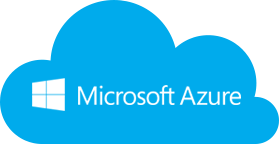- Integration with other Microsoft tools:
Microsoft Azure is closely integrated with other Microsoft tools. Integrations between Microsoft tools like SharePoint, Office 365, and Outlook could seamlessly integrate with Azure. Furthermore, users can also use the same virtual machines in Azure that they use on-premises, like Windows and Linux. In other words, Azure is able to offer its users a seamless and integrated service package.
- IaaS and PaaS:
Many agree that Azure provides an enticing combination of IaaS and PaaS services. The IaaS enables to users pay for only for what they use as well as to outsource their cloud-computing infrastructure while PaaS enables users to create their own Web apps (and/or software) without having to buy and maintain the underlying infrastructure. As such, users can customize their cloud software that meets their specific requirements.
- Good flexibility:
Yes, flexibility is another benefit that users love about Azure. Azure manages to develop the Infrastructure as a Service (IaaS), Platform as a Service (PaaS) and Software as a Service (SaaS) that provides users with the flexibility and it is up to them on which abstraction level they want to work.
- IaaS provides the best flexibility though IT staff need to spend more time managing it.
- SaaS acts as a ready-to-use hosting environment that offers great scalability and highest availability.
- PaaS is a point in between. Though users need to spend some time to configure it, it gives them more flexibility if compared with SaaS.
- Cost effective:
Another feature that benefits the Microsoft Azure’s users is the cost effective pricing. Although Azure had dropped the pay-as-you-go model, they are still cost effective where they charge no upfront costs and termination fees. With Azure, users can cut costs without losing benefits and efficiency of cloud computing.
- Hybrid Capability:
The hybrid approach of Azure offers the best path to users to optimize their existing assets. Microsoft Azure provides users with the ability to create hybrid environments, allowing them to leverage their on-premise resources and the benefits of the cloud. Furthermore, users can also build hybrid applications with Azure.
On a final note, Azure is not somewhere in the cloud for people to store things and data. Azure is changing the face of cloud computing with its new way of managing data and networks.

